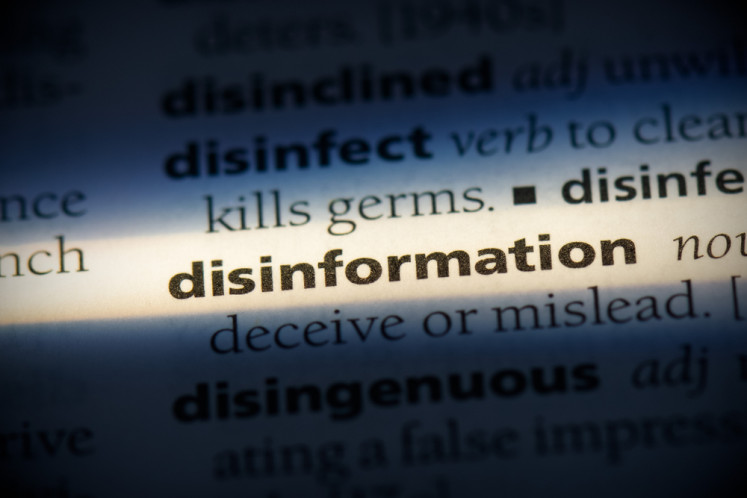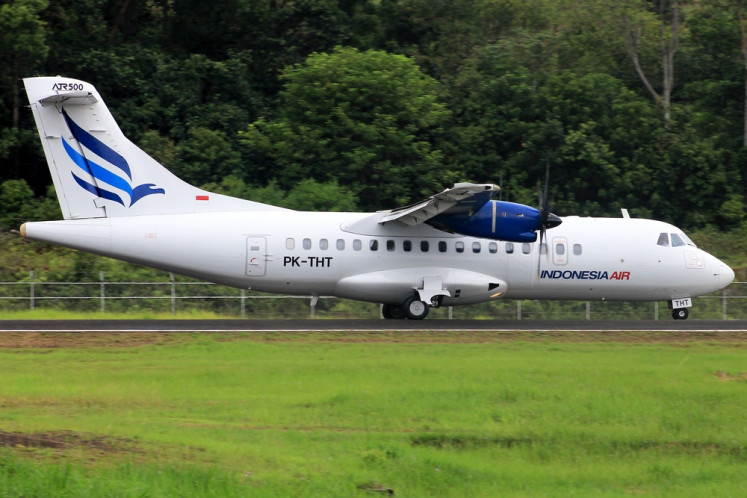Popular Reads
Top Results
Can't find what you're looking for?
View all search resultsPopular Reads
Top Results
Can't find what you're looking for?
View all search resultsRegions begin to suffer as dry spell continues
Prolonged drought has begun to take its toll on the populations of Batam, the capital of Riau Islands province, as well as a number of regions in Central Java, as water sources dwindle
Change text size
Gift Premium Articles
to Anyone
P
rolonged drought has begun to take its toll on the populations of Batam, the capital of Riau Islands province, as well as a number of regions in Central Java, as water sources dwindle.
In Batam, the scarcity of clean water is hurting residents, with water sources experiencing drastic decreases in water debit.
The Meteorology, Climatology and Geophysics Agency's (BMKG) Batam office predicted rain would not fall in the region until November, a result of the El Niño phenomenon hitting the area.
BMKG Batam head Philip Mustamu said that El Niño caused less rain to fall in certain areas.
'This is what has been going on in Batam,' he told The Jakarta Post on Thursday.
The prolonged drought has greatly reduced water reserves in all five reservoirs under the management of Batam administration-owned tap water company PT Adhya Tirta Batam.
Nongsa dam has seen the sharpest decrease in water levels, falling 3.98 meters, followed by Sei Harapan dam, where the water level has fallen 3.65 m, Mukakuning dam with a decrease of 2.95 m, Sei Ladi dam with a decrease of 2.71 m and Duriangkang dam with a decrease of 1.84 meters.
Batam city administration spokesperson Ardiwinata said that the region was wholly dependent on dams for clean water.
'The public must understand that the only available water sources are the dams, which collect rain water,' said Ardiwinata, calling on the city's people to conserve water use.
Data at the tap water company show that the worst impact of El Niño occurred in 1997-1998, when no rain fell on Batam for eight months.
Prolonged drought has also caused harvest failures in 6,578 hectares of rice fields in a number of regions in Central Java, including Grobogan, Blora, Pati, Demak, Pemalang and Brebes.
'The impacts of drought are being felt in 29 out of 35 regencies and cities across Central Java,' said Prasetyo, the head of the provincial Water Resources Agency.
As well as the harvest failure, Prasetyo said, nearly 27,000 ha of rice fields in the province were also suffering lesser impacts of the drought, over 7,000 ha moderate impacts and some 2,800 ha heavy impacts.
Meanwhile, data from the Central Java Disaster Mitigation Agency (BPBD) showed that 17 regions in the province were already in need of clean water aid: Rembang, Blora, Grobogan, Pati, Wonogiri, Sukoharjo, Klaten, Boyolali, Banyumas, Cilacap, Purbalingga, Tegal, Pemalang, Demak, Purworejo, Kebumen and Jepara.
Clean water was distributed in Kebon Taman subdistrict in Semarang city, on the border of Semarang and Demak, earlier this week.
Central Java BPBD head Sarwa Pramana said that clean water had also been distributed by the BPBD in Purbalingga, Cilacap, Purworejo, Jepara, Demak, Wonogiri, Kebumen and Blora.
'Other efforts to deal with the drought include engineering artificial rain and the distribution of clean water in affected regions,' Sarwa said.










